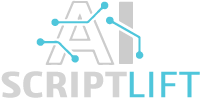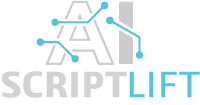
AI for Creating Content That Supports Sales Funnels
Can AI truly revolutionize how businesses create content that drives sales? At Script Lift, LLC, we believe it already has. Our platform, JAXI.AI, uses cutting-edge artificial intelligence to craft personalized, SEO-optimized content that aligns perfectly with each stage of your sales funnel. Whether you’re nurturing leads or closing deals, AI-powered content creation is the game-changer your digital strategy needs.
AI tools like JAXI.AI streamline the entire content journey—from awareness to conversion. For example, AI-generated blog posts attract traffic, while tailored email campaigns and product descriptions push prospects toward purchase. With features like auto blogging, business profile management, and marketing copy generation, JAXI.AI helps businesses maintain a consistent and persuasive online presence.
But AI isn’t just about automation—it’s about precision and performance. Experts like Neil Patel emphasize how AI-driven content boosts engagement and ROI when aligned with funnel stages. So, are you ready to explore how AI can supercharge your sales funnel? Let’s dive into the strategies, tools, and real-world examples that make it all possible.
Understanding Sales Funnels and the Role of Content
A sales funnel maps the customer journey from discovery to purchase. It includes four key stages: Awareness, Interest, Decision, and Action. At the top, content grabs attention—think blog posts, videos, or social media. As leads move to the Interest stage, educational content like guides or webinars builds trust. During the Decision phase, case studies and testimonials help prospects evaluate options. Finally, persuasive calls-to-action and limited-time offers drive conversions in the Action stage.
Each piece of content must align with the buyer’s mindset. When done right, it nurtures leads and removes friction. That’s where AI-generated content becomes a game-changer. It enables marketers to produce tailored, high-quality assets at scale. AI tools analyze behavior, predict needs, and generate content that resonates at every funnel stage.
As digital strategies evolve, AI is no longer optional—it’s essential. Businesses leveraging AI gain a competitive edge in speed and personalization. Learn more about AI in digital content strategy and how it’s reshaping the future of digital marketing.
The Evolution of AI in Content Creation
Artificial intelligence has come a long way since its early use in basic automation tools. In the past, marketers relied heavily on manual processes to craft content. That changed with the rise of machine learning and natural language processing. These technologies enabled AI to understand context, tone, and user intent more accurately.
The introduction of GPT models marked a turning point. Suddenly, AI could generate content that felt human-written. This breakthrough allowed brands to scale their messaging without sacrificing quality. As a result, marketers began shifting from traditional methods to AI-assisted workflows.
Today, AI tools streamline everything from idea generation to final edits. This shift not only saves time but also boosts productivity. Marketers can now focus on strategy while AI handles repetitive tasks. The implications are massive—faster turnaround, consistent voice, and data-driven optimization.
To explore how AI is transforming content, visit our AI content creation insights. For deeper strategies, check out our digital content strategy guide.
Types of AI Tools for Content Creation
AI tools for content creation come in various forms, each tailored to specific marketing needs. Jasper excels at long-form blog writing and brand voice consistency. Copy.ai is ideal for crafting email copy and product descriptions quickly. ChatGPT offers versatility, generating everything from social media captions to customer support scripts. Writesonic focuses on ad copy and landing pages, making it a favorite for performance marketers.
These tools can be grouped by function. For blog content, Jasper and ChatGPT lead the way. Email marketers often prefer Copy.ai for its quick-turnaround capabilities. For social media, Writesonic and ChatGPT provide engaging, platform-specific content. Video marketers use tools like Pictory and Synthesia to generate scripts and even AI-generated visuals.
The advantages are clear—speed, scalability, and cost-efficiency. However, quality may vary depending on the prompt and tool used. Some platforms offer limited customization unless you upgrade to premium tiers. Despite these drawbacks, AI tools remain essential for modern content strategies.
To explore how AI is transforming content workflows, visit our detailed guide. You can also browse our latest blog posts for more insights.
Mapping AI Content to Each Stage of the Sales Funnel
AI tailors content to each sales funnel stage with precision. At the top, it crafts SEO-optimized blog posts and social media updates that boost visibility. These assets attract potential leads by addressing trending topics and search intent. Tools powered by AI analyze keywords and audience behavior to ensure relevance and engagement.
As prospects move into the interest phase, AI shifts focus. It personalizes email campaigns based on user data and behavior. Simultaneously, it generates compelling lead magnets and educational resources that build trust. This approach nurtures curiosity and encourages deeper interaction.
In the decision stage, AI delivers persuasive content like case studies, product comparisons, and testimonials. These assets help prospects evaluate options and reduce hesitation. AI ensures consistency and clarity across all formats.
Finally, in the action phase, AI writes high-converting CTAs, landing page copy, and follow-up emails. These elements drive conversions by addressing objections and reinforcing value. For more insights, explore AI in digital marketing and how it’s transforming content creation.
Personalization and Segmentation Using AI
AI swiftly processes vast amounts of customer data to uncover patterns, preferences, and behaviors. It uses this insight to craft tailored messages that resonate with individual users. By analyzing browsing history, purchase behavior, and engagement metrics, AI delivers content that feels personal and timely.
Segmentation plays a critical role in guiding prospects through the sales funnel. AI automates this by grouping audiences based on demographics, interests, and buying intent. This ensures each segment receives content that aligns with their stage in the buyer’s journey.
For instance, a first-time visitor might see an educational blog post, while a returning user receives a product comparison guide. Meanwhile, loyal customers could get exclusive offers or loyalty rewards. These personalized experiences increase engagement and drive conversions.
AI-generated content adapts to various buyer personas effortlessly. Whether it’s a tech-savvy millennial or a budget-conscious parent, AI delivers the right message at the right time. Explore how AI in digital marketing enhances personalization. Also, learn how it supports content creation strategies that convert.
Integrating AI Content into Your Sales Funnel Strategy
Start by mapping your sales funnel stages—awareness, consideration, and decision. Then, assign AI-generated content to each phase. Use AI to craft blog posts, email sequences, and landing page copy tailored to user intent. For example, generate informative articles for the top of the funnel to attract leads. In the middle, deploy AI to personalize email content that nurtures prospects. At the bottom, create persuasive product descriptions and CTAs that drive conversions.
To maintain brand voice, train your AI tools using existing brand guidelines and tone samples. Regularly review and edit outputs to ensure consistency. Avoid publishing raw AI content without human oversight.
Blend human creativity with AI by using AI for ideation and drafts, while humans refine and inject emotion. This synergy boosts productivity without sacrificing authenticity. For deeper insights, explore our AI content strategy guide or visit our blogs section for more resources. With the right balance, AI becomes a powerful ally in scaling your funnel content effectively.
Measuring the Effectiveness of AI-Generated Content
To evaluate AI-generated content, start by aligning key performance indicators with each stage of your sales funnel. At the top, focus on click-through rates and impressions. In the middle, track engagement metrics like time on page and scroll depth. At the bottom, prioritize conversion rates and lead quality. Use tools like Google Analytics and Hotjar to monitor these metrics in real time. They help identify which content drives action and where users drop off.
A/B testing is essential for refining performance. Test headlines, CTAs, and content formats to see what resonates. Always run tests long enough to gather statistically significant data. Once you identify winning variations, implement changes and monitor results. Don’t rely on assumptions—let the data guide your decisions.
For deeper insights, explore our AI content creation strategies or visit our blogs for more expert tips. Continuous optimization ensures your AI-generated content supports every stage of the funnel effectively.
Challenges and Ethical Considerations
AI-generated content presents unique challenges that marketers must navigate carefully. One major concern is maintaining high-quality output. Poorly written or irrelevant content can damage brand credibility. Additionally, the risk of unintentional plagiarism increases when relying heavily on AI tools. Misinformation is another critical issue. Without proper oversight, AI may generate inaccurate or misleading data.
Ethical transparency is equally important. Audiences deserve to know when content is AI-generated. Failing to disclose this can erode trust and violate platform guidelines. Marketers should always include clear disclaimers when using AI tools for content creation.
To use AI responsibly, implement a human-in-the-loop process. Always review and edit AI outputs before publishing. Use AI as a support tool, not a replacement for human creativity. Establish content guidelines that prioritize accuracy, originality, and relevance. For more insights, explore how AI is transforming content creation and enhancing digital strategies.
By following these best practices, businesses can harness AI’s power while maintaining ethical standards and content integrity.
Case Studies and Real-World Examples
A SaaS startup integrated Jasper and HubSpot to automate blog creation and email sequences. Within three months, they saw a 42% increase in lead conversions. The AI-generated content aligned with each stage of their sales funnel, from awareness to decision. Their success stemmed from consistent messaging and data-driven personalization.
Another example is an e-commerce brand that used Copy.ai and ChatGPT to produce product descriptions and retargeting ads. As a result, their click-through rate jumped by 35%, and cart abandonment dropped by 18%. The key was using AI to tailor content based on user behavior and purchase history.
A B2B marketing agency leveraged Surfer SEO and Writesonic to optimize landing pages and blog posts. Their organic traffic doubled in 60 days. Strategic keyword placement and AI-driven topic clustering played a major role. For more insights on how AI enhances content strategy, explore our digital content strategy guide or visit our blogs section.
These businesses succeeded by aligning AI tools with clear funnel goals. Their results prove that AI, when used strategically, drives measurable growth.
Future Trends in AI and Content Marketing
AI is rapidly reshaping content marketing, and the pace won’t slow down. Generative video tools are emerging fast, enabling brands to produce high-quality visuals at scale. Voice AI is also gaining traction, offering interactive and personalized audio experiences that deepen customer engagement. Meanwhile, hyper-personalization is becoming the new standard. AI now tailors content to individual behaviors, preferences, and purchase history in real time.
To stay competitive, marketers must embrace these innovations early. Start by integrating AI-driven tools into your content strategy. Explore how AI enhances digital content strategy and boosts campaign performance. Additionally, invest in platforms that support dynamic content creation, including video and voice formats.
Marketers should also monitor AI trends through trusted sources like the ScriptLift blog. Staying informed helps teams pivot quickly and maintain relevance. As AI evolves, agility and adaptability will define success. Those who leverage these tools effectively will lead the next wave of content innovation.
Frequently Asked Questions (FAQs)
AI-generated content uses machine learning to produce text based on data inputs and user prompts. It mimics human writing patterns while delivering content at scale. However, it doesn’t fully replace human writers. Creativity, emotional nuance, and strategic storytelling still require a human touch.
To match your brand voice, train the AI with existing content samples. Consistent prompts and tone guidelines also help maintain alignment. Yes, AI content can be SEO-friendly. With the right tools, it incorporates keywords, structure, and readability best practices.
Top tools include Jasper, Copy.ai, and Writesonic. These platforms streamline content creation across various formats. To integrate AI into your sales funnel, map content to each stage—awareness, consideration, and decision. Use AI to generate blog posts, emails, and landing page copy.
There are risks, such as generic content or factual inaccuracies. Always review and edit before publishing. Measure ROI by tracking engagement, conversions, and time saved. AI can personalize content using customer data and behavior patterns.
Industries like e-commerce, SaaS, and digital marketing benefit the most. For deeper insights, explore our AI content strategy and digital marketing tools to boost your funnel performance.

